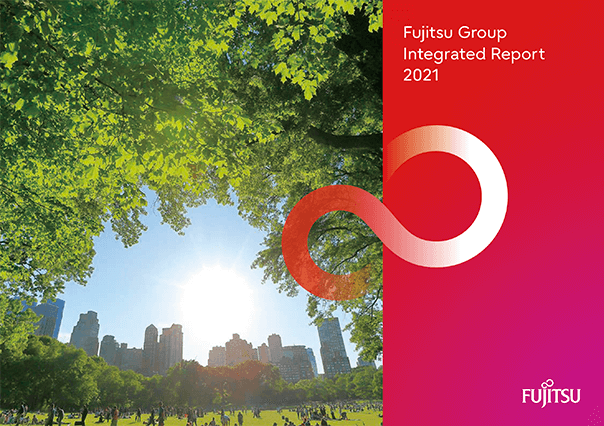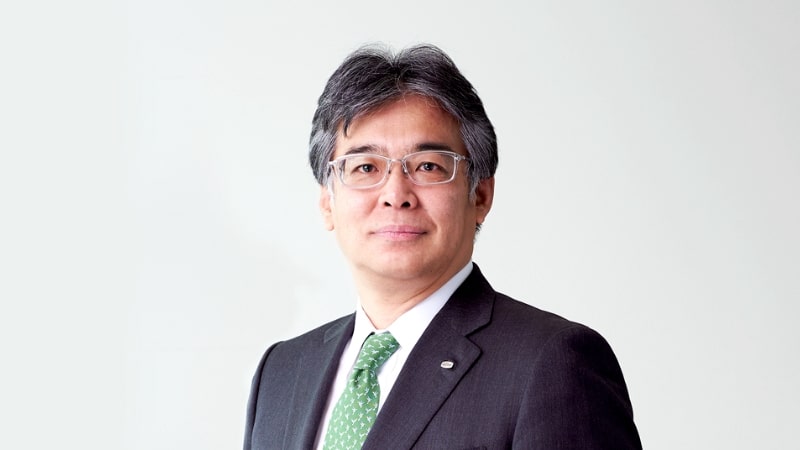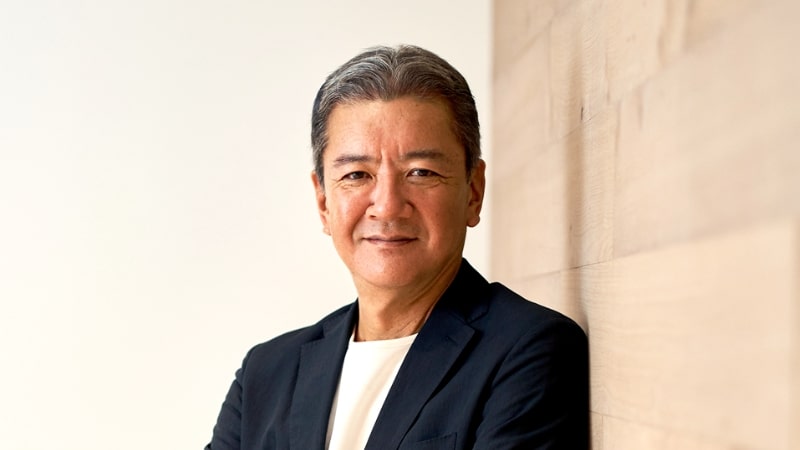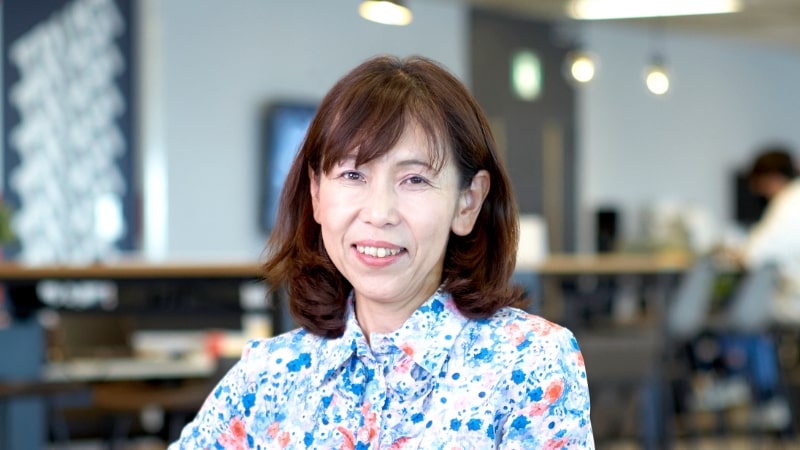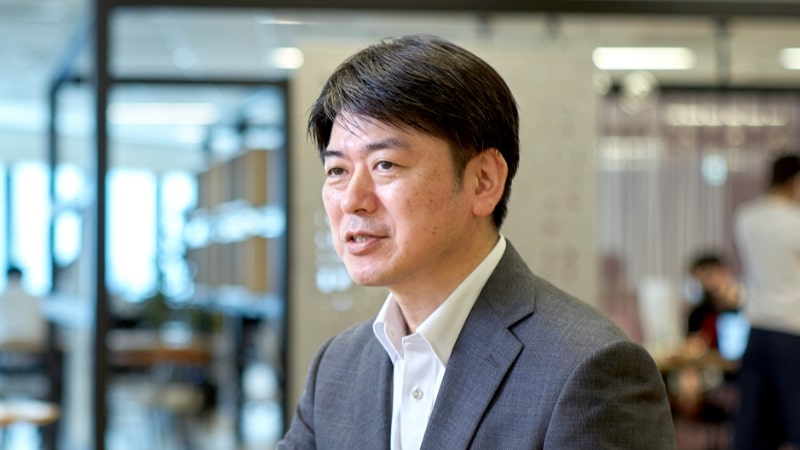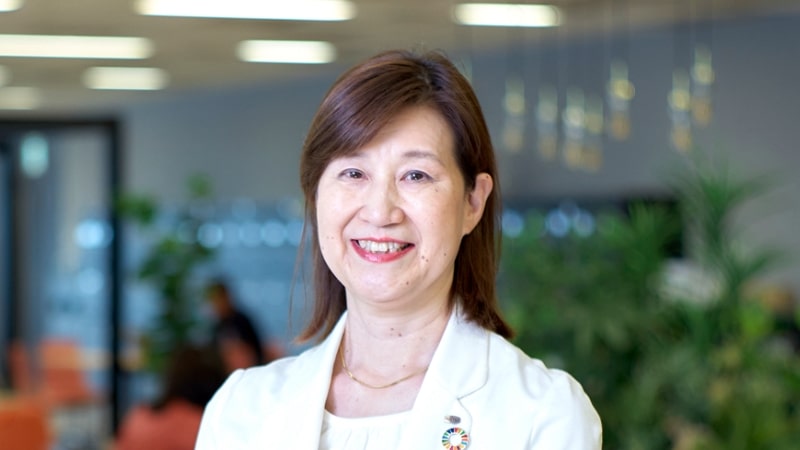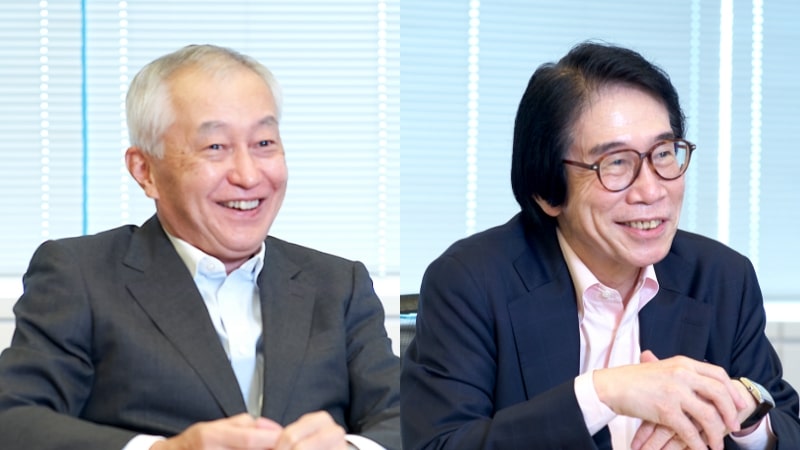Interview with the Chief Human Resources Officer
The introduction of job-based human resources
management means a shift to an approach
focused on talent and organizational design.
Hiroki Hiramatsu
CHRO
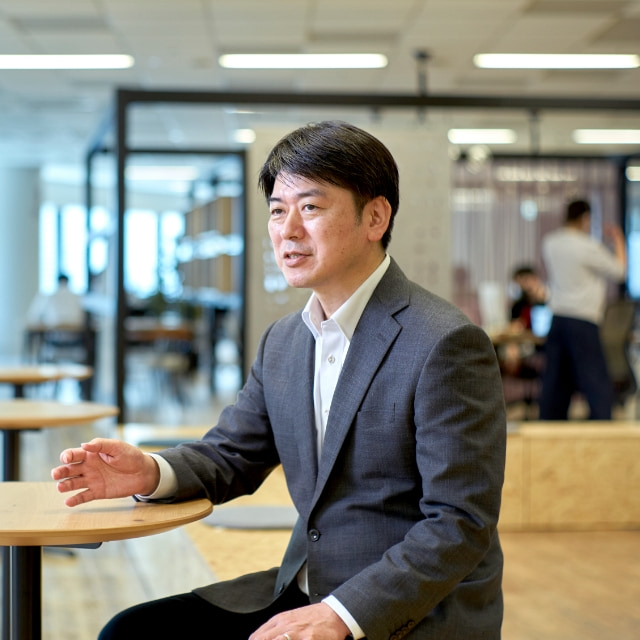
What is the objective of reforming the Fujitsu Group’s human resources strategy?
Our overriding aim is to foster a mindset and organizational culture that forge ahead with the transformation of the Fujitsu Group’s businesses and contribute to the realization of Our Purpose. Digital transformation will be the growth driver of the Fujitsu Group. In other words, we will grow by helping customers transform and grow their businesses. To build the necessary capabilities, we need personnel who can identify issues and think and act independently. The development of such personnel is the objective of the human resources strategy that we are currently pursuing.
Our previous business model was based on made-to-order construction of IT systems for our customers, which called for the provision of services in accordance with given specifications. Although indispensable for the construction of stable systems, I think this role put us in a slightly passive position. Therefore, we believe that our human resources strategy must change to reflect the Group’s future business model.
What specific measures are you taking to encourage employees to think and act independently?
In 2020, we launched a series of measures aimed at realizing new workstyles and reforming organizational and human resources management, which we referred to as our “Work Life Shift” initiative. In particular, the expansion of our internal job posting system and the introduction of job-based human resources management to underpin the system have emerged as important factors in encouraging employees to independently add to their skill sets and take on new challenges.
The introduction of job-based human resources management means a shift from the conventional approach of membership-based human resources management—in which the emphasis is on how to utilize the talent currently available—to a strategic approach to talent and organizational design in which the focus is on the type of human resources needed to execute business strategies.
Expanding and enhancing the internal job posting system has also markedly changed the relationship between the Group and its employees. Employees have far more opportunities to take the initiative in searching for and selecting positions advertised in-house, acquiring new skills as needed, and pursuing ambitious goals. Rather than management unilaterally deciding on the training and assignment of employees, the employees can now learn and build their careers proactively.
How have employees reacted to the major changes in the human resources system?
The reaction has been more positive than expected. For example, more than 1,350 employees from across the Fujitsu Group responded to a recruitment drive for new managers in October 2020, and approximately 750 of the applicants received promotions to managerial positions. In addition, as of June 2021, nearly 2,900 employees had applied for open in-house positions, with more than 750 employees assuming new positions as a consequence.
In total, at least 1,500 personnel have transferred, demonstrating that employees have taken the management’s seriousness about change on board. Moreover, those who have not yet applied for the advertised positions have expressed an interest in taking up the challenge in the future and developing their skills to this end. Overseas, Group company employees have asked for more information so that they can pursue their ambitions by applying for in-house positions. Through “Fujitsu VOICE” , a program for collecting employee feedback, we are able to receive employees’ frank evaluations of measures in a timely manner and utilize the information to improve the systems that we have introduced.
The internal recruitment system is invigorating not only individual employees but the organization as a whole. To attract talent through the system, divisions must make themselves more appealing. Naturally, the engagement of existing division members will also come under scrutiny. If managers want to attract personnel or retain existing personnel, they have to create environments where employees can take on challenges. To encourage the creation of such environments, one-on-one dialogues between managers and their subordinates are held Group-wide. Also, we are creating systems to ensure high-quality communication even when the participants are in different locations.
As well as the personnel assignment system, you have changed the personnel evaluation system.
How exactly has it changed?
We have emphasized linking personnel evaluation and Our Purpose. Creating an organization that is strongly focused on Our Purpose cannot be accomplished simply by the senior management team taking the lead in setting a direction for the Group. We believe the establishment of a vision that both managers and personnel from each division and Group company can relate to and endeavor to realize is also necessary. With this in mind, we have introduced a system that evaluates employees’ contribution to the realization of our vision.
Specifically, for senior officers worldwide, we have adopted a common “balanced scorecard”* to evaluate beneficial impact on Our Purpose, the tackling of transformation tasks, contribution to financial and non-financial indicators, initiatives under the Global Responsible Business (GRB) platform, and performance in relation to indicators. For the management rank below senior officers, targets are broken down into numerical values, and beneficial impacts rather than the degrees of achievement are evaluated.
- *The balanced scorecard is a strategy and business performance evaluation framework utilizing a well-balanced combination of management indicators that have an important bearing on the realization of a vision or strategy.
The Fujitsu Group is promoting diversity, inclusion, and wellbeing under the GRB platform. What is the relationship between this platform and the Work Life Shift initiative?
Since the Work Life Shift initiative contributes to employee wellbeing and promotes diversity and inclusion within the Group, we are of course seeking synergies between this initiative and the GRB platform. The platform represents the Fujitsu Group’s commitment as a global company and forms the basis of business management. Meanwhile, as Work Life Shift is part of efforts by the Group to transform itself, the initiative occupies a different position and is linked to business strategies. However, the common goal of the initiative and platform is to realize Our Purpose.
